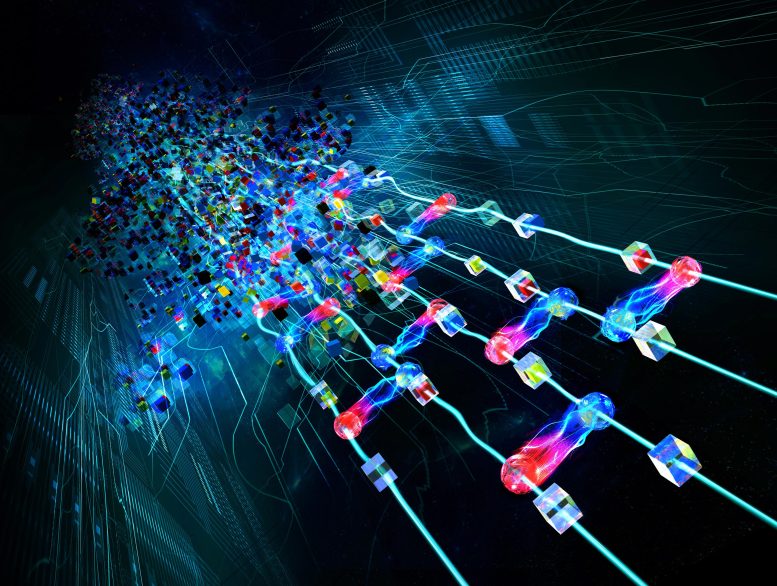
The method developed at the University of Innsbruck produces quantum circuits based on user specifications and tailored to the features of the quantum hardware the circuit will be run on. Credit: University of Innsbruck/Harald Ritsch
Researchers have developed a
Quantum Computing Challenges
To prepare a certain quantum state or execute an algorithm on a quantum computer, one needs to find the appropriate sequence of quantum gates to perform such operations. While this is rather easy in classical computing, it is a great challenge in quantum computing, due to the particularities of the quantum world. Recently, many scientists have proposed methods to build quantum circuits with many relying on machine learning methods. However, training these ML models is often very hard due to the necessity of simulating quantum circuits as the machine learns. Diffusion models avoid such problems due to the way how they are trained.
“This provides a tremendous advantage,” explains Gorka Muñoz-Gil, who developed the novel method together with Hans J. Briegel and Florian Fürrutter. “Moreover, we show that denoising diffusion models are accurate in their generation and also very flexible, allowing to generate circuits with different numbers of qubits, as well as types and numbers of quantum gates.”
The models also can be tailored to prepare circuits that take into consideration the connectivity of the quantum hardware, i.e. how qubits are connected in the quantum computer.
“As producing new circuits is very cheap once the model is trained, one can use it to discover new insights about quantum operations of interest,” Gorka Muñoz-Gil names another potential of the new method.
Quantum Circuit Generation
The method developed at the University of Innsbruck produces quantum circuits based on user specifications and tailored to the features of the quantum hardware the circuit will be run on. This marks a significant step forward in unleashing the full extent of quantum computing. The work has now been published in Nature Machine Intelligence and was financially supported by the Austrian Science Fund FWF and the European Union, among others.
Reference: “Quantum circuit synthesis with diffusion models” by Florian Fürrutter, Gorka Muñoz-Gil and Hans J. Briegel, 20 May 2024, Nature Machine Intelligence.DOI: 10.1038/s42256-024-00831-9